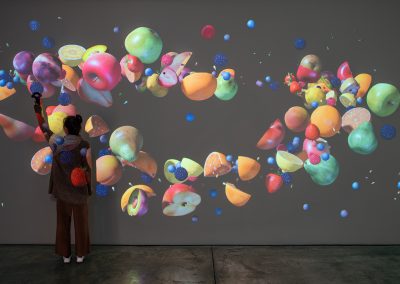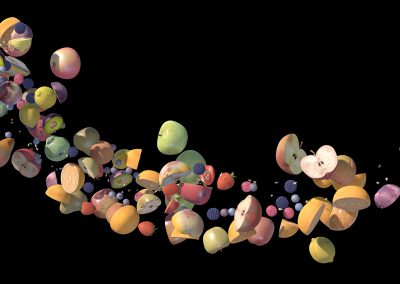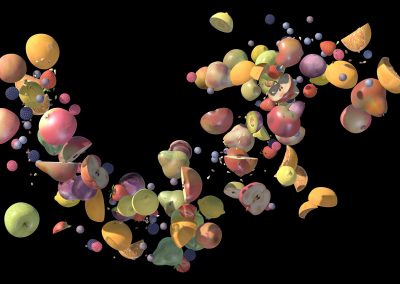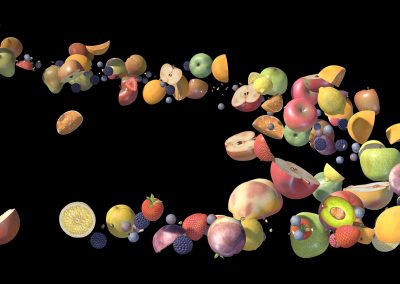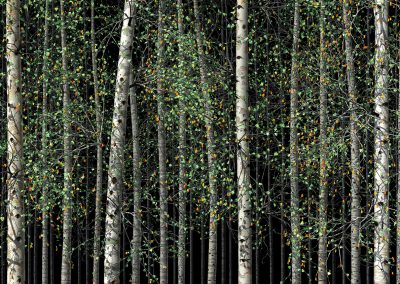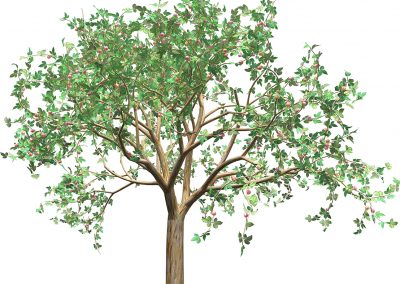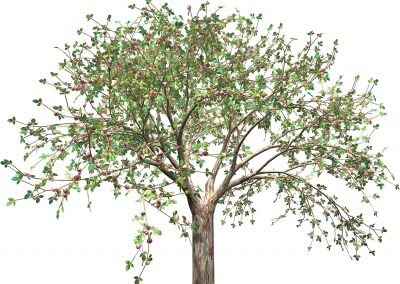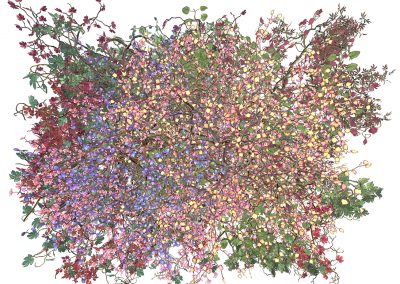Jennifer Steinkamp
Womb
Talley Dunn Gallery
August 24 – October 12, 2019
Womb features five of Steinkamp’s monumental, acclaimed video installations. Her mesmerizing simulations of moving trees, flowers, and fruit blur the boundaries between real and illusionistic space, as the projected images rotate, sway, and float with a hypnotic presence. Through these hyperreal animations and their careful calibration to the viewing space’s dimensions, Steinkamp explores ideas about architectural space, motion, and perception. Further, the cyclical nature of the works creates transformative environments in which time is suspended and narrative structure collapses.
The animation Blind Eye 4 presents a birch forest, with leaves falling and trees swaying in a breeze. The frieze of birches is flattened, as though seen without the benefit of depth perception. This work is one of a group of installations Steinkamp created in response to the forested grounds of the Clark Art Institute, which organized a solo exhibition of her work in 2018. In emphasizing the eye-shaped scars left by the birch trees’ fallen branches, Blind Eye 4 draws attention to vision and the gaze—perennial questions of post-modernity.
Trees and flowers appear frequently in Steinkamp’s work, carrying strong literary and art historical associations of fertility, mortality, gender, and creation. For example, the title of the installation Bouquet evokes familiar tropes of femininity and domesticity. Yet rather than a group of cut flowers, the animation comprises a virtual arrangement of fully-grown trees: a tangled mass, the trees writhe in space, medusa-like. Similarly, the boughs of Judy Crook twist and curl energetically, and its foliage changes color before our eyes. The dynamism of these imagined trees runs counter to cultural perceptions of nature as passive and benign, and instead we are reminded of the power of the biblical Tree of Knowledge, or the ambiguous threat of enchanted forests in fairy tales.
At the center of the exhibition is the installation Womb, an interactive work in which glossy fruits respond to the participant’s gestures, jostling each other and bumping into the walls with uncanny realism. The shifting formations of citrus, apples, berries, and stone fruit are accompanied by whistling winds sampled from The Wizard of Oz. The fruit’s sensuality is undeniable as it bobbles across the room, while the title draws a direct parallel between plant reproduction and human sex organs. Steinkamp gives us no clear interpretation of the fraught connotations present in Womb. Pleasure, fertility, and sensuality arise from the impassive workings of algorithms and binary code, visual spectacle orchestrated by invisible feats of programming.

